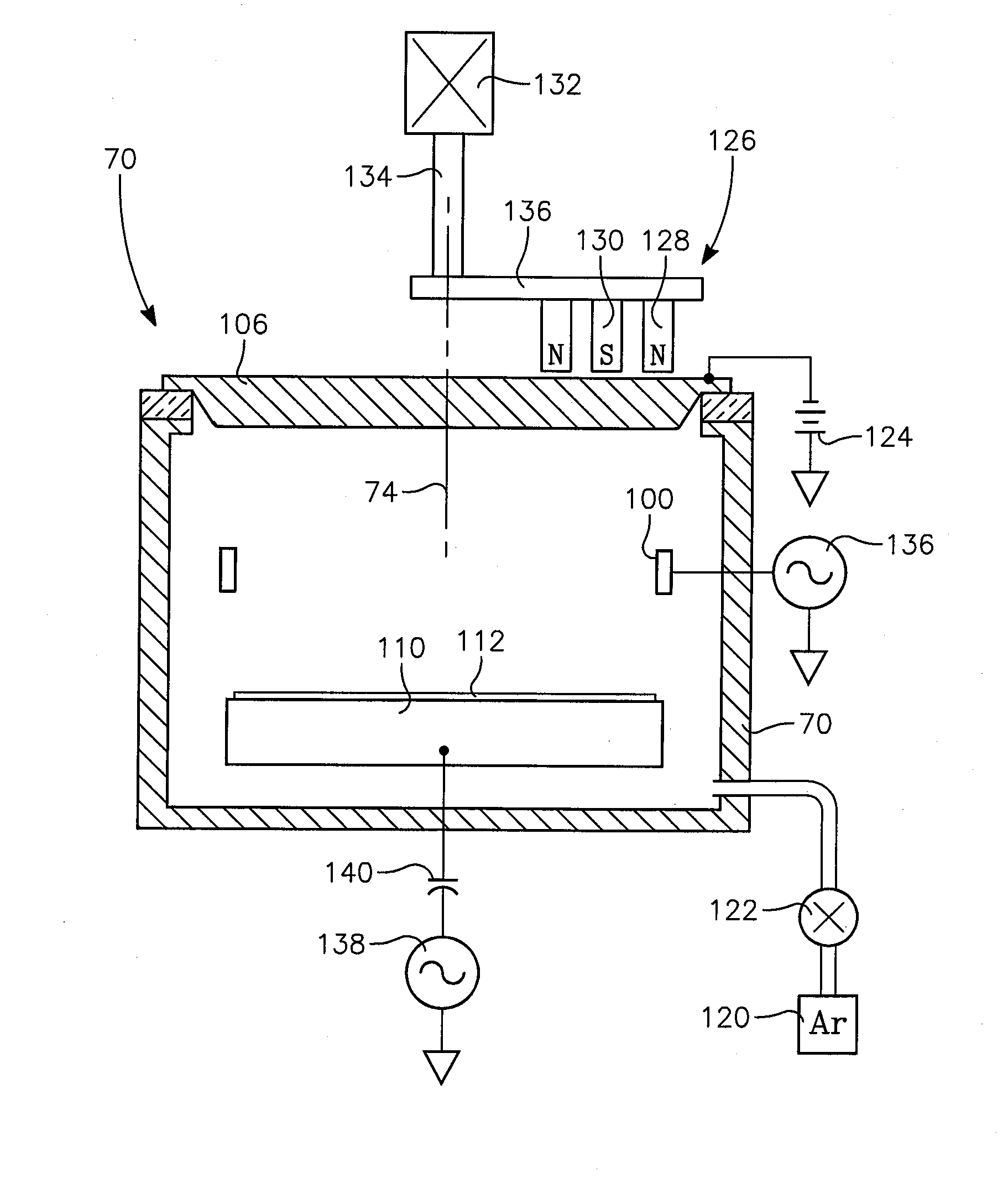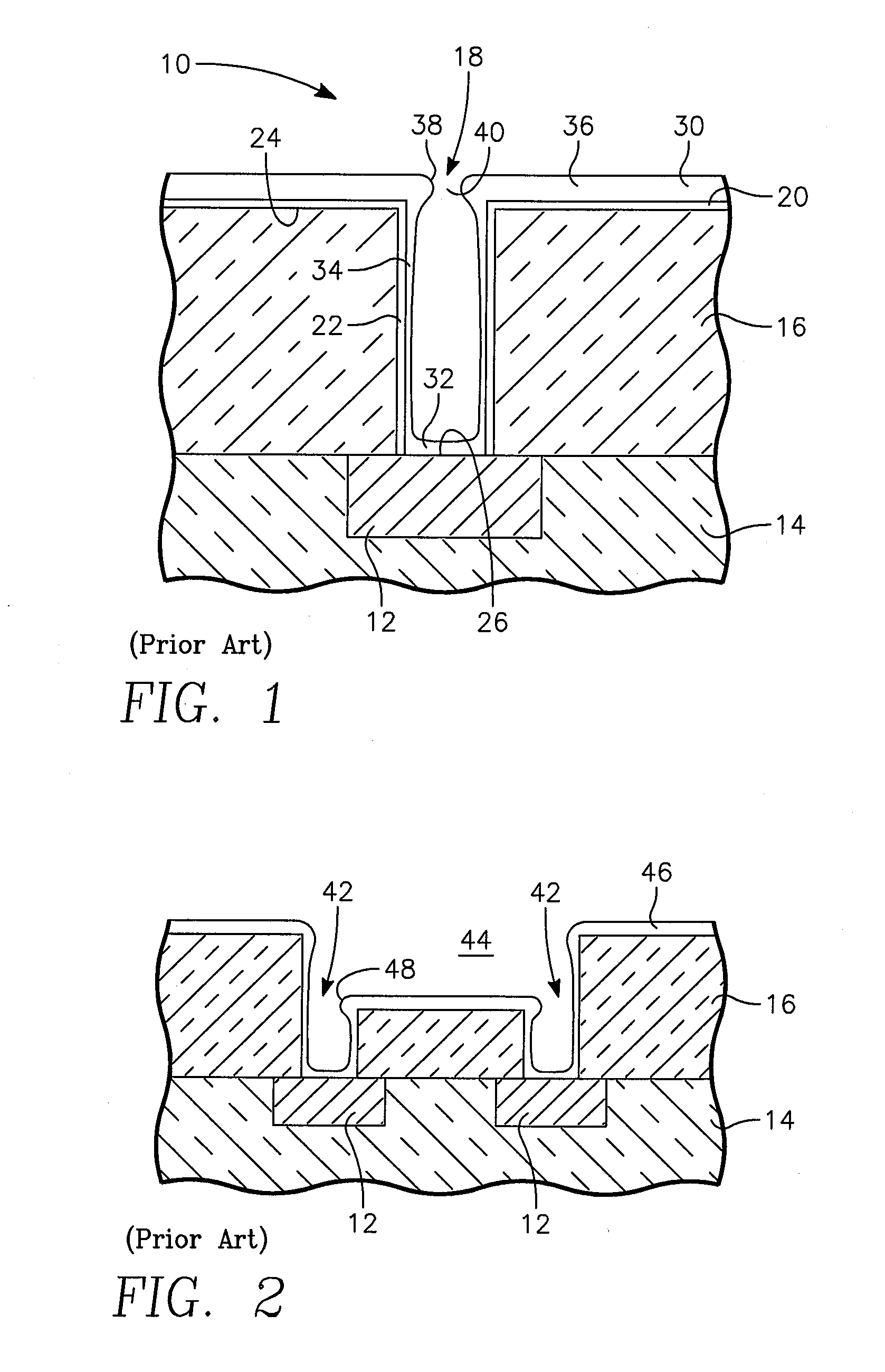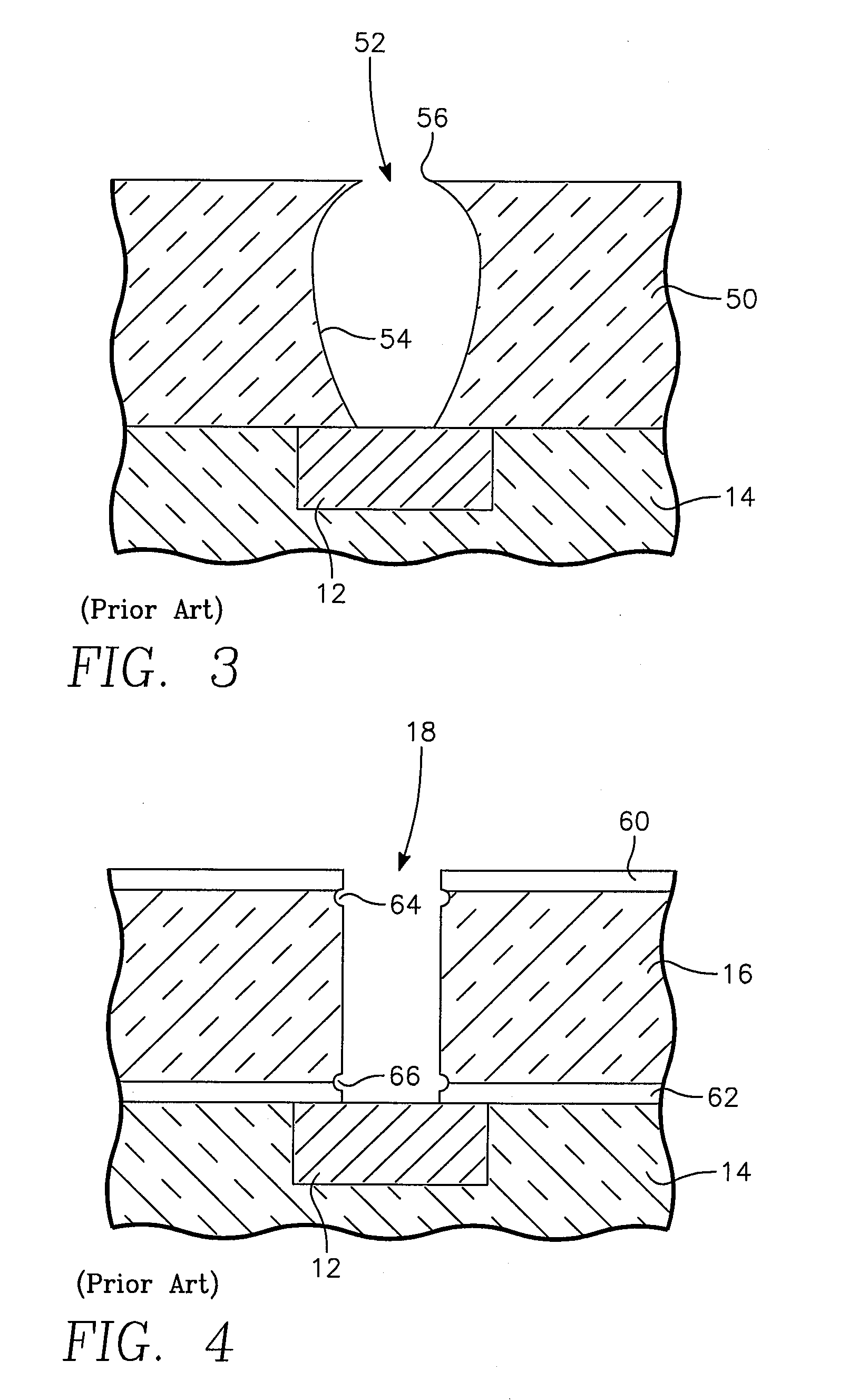Resputtered copper seed layer
a seed layer and copper technology, applied in the direction of vacuum evaporation coating, coating, electric discharge tube, etc., can solve the problems of narrowest portion of sidewall portion thickness, and difficult to achieve sufficient via sidewall coverage. , to achieve the effect of low argon pressure, low coil power and high target power
- Summary
- Abstract
- Description
- Claims
- Application Information
AI Technical Summary
Benefits of technology
Problems solved by technology
Method used
Image
Examples
Embodiment Construction
[0033]Filling copper into high aspect-ratio holes such as vias and dual-damascene interconnects is facilitated by a combination of copper sputter deposition and argon sputter etching preferably performed in a single copper sputter chamber. The energetic sputter etching reduces the size of overhangs and also tends to redistribute copper into concave portions of the sidewalls in a process often referred to as resputtering.
[0034]Although some aspects of the invention are not so limited, the sputter deposition and sputter etching are preferably performed in a chamber with an RF coil which can excite an argon plasma for the argon sputter etch with limited if any sputtering of the copper target during the etch phase. Ding et al. have described a sputter deposition / etch sequence of a tantalum barrier in an inductively coupled sputter chamber in U.S. patent application Ser. No. 10 / 915,139, filed Aug. 9, 2004, now published as U.S. patent application publication 2006 / 0030151. A similar sputt...
PUM
| Property | Measurement | Unit |
|---|---|---|
| thickness | aaaaa | aaaaa |
| thickness | aaaaa | aaaaa |
| aspect ratio | aaaaa | aaaaa |
Abstract
Description
Claims
Application Information
 Login to View More
Login to View More - R&D
- Intellectual Property
- Life Sciences
- Materials
- Tech Scout
- Unparalleled Data Quality
- Higher Quality Content
- 60% Fewer Hallucinations
Browse by: Latest US Patents, China's latest patents, Technical Efficacy Thesaurus, Application Domain, Technology Topic, Popular Technical Reports.
© 2025 PatSnap. All rights reserved.Legal|Privacy policy|Modern Slavery Act Transparency Statement|Sitemap|About US| Contact US: help@patsnap.com



